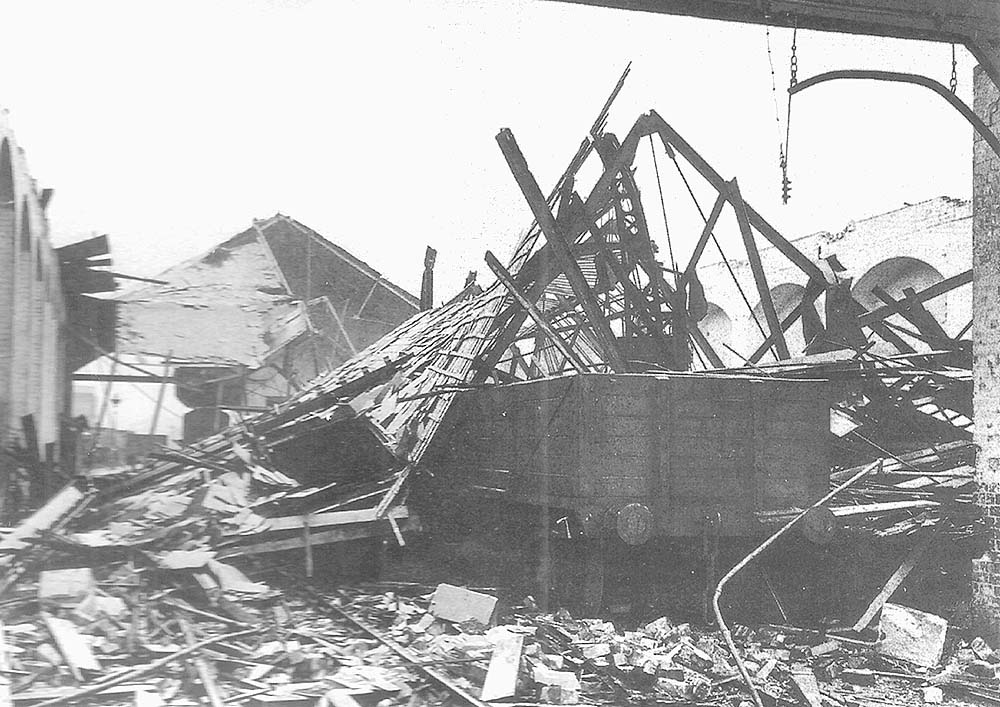 |
|
GWR Route: Banbury to Wolverhampton
Handsworth & Smethwick: gwrhs2635
 |
An official photograph of Handsworth & Smethwick Goods
shed on the morning after the night raid of 11th to 12th December 1940. This
raid started at 18:05 on Wednesday 11th December and lasted thirteen hours; 278
German bombers dropped high explosive bombs, parachute landmines and 25,000
incendiaries in a widespread raid over Birmingham, targeting Bordesley,
Duddeston, Solihull, Shirley, Harborne, Kings Norton, Smethwick and Handsworth.
A total of 263 people were reportedly killed and a further 243 injured.
Significant industrial damage (and 95 of the casualties) occurred at the Fisher
& Ludlow's steel pressing Works and W & T Avery's, Soho Foundry in
Smethwick. Also in Smethwick nearly 3,000 people were evacuated due to
unexploded landmines. This was the first time that the 1000kg Luft Mine B
(parachute landmine) had been used over Birmingham, but only seven of the
eighteen dropped exploded. These landmines were originally designed as maritime
magnetic mines for coastal waters, but were adapted for land use by setting a
delayed action impact fuse. They had a thin steel casing which maximised the
destructive effect of the explosive charge resulting in widespread damage to
buildings, but to prevent damage to the landmines’ casing they required a
parachute to slow their descent. Occasionally the parachute cords resulted in a
Landmine becoming suspended from tree or structure and not exploding. A minimum
400 yard restriction was then enforced around the unexploded Landmine until it
could be defused. After this raid, an Admiralty Disposal Squad from London was
used to defuse the unexploded landmines.
During the raid at 00:17am on 12th December 1940, one of the
parachute Landmines which did explode destroyed Handsworth and Smethwick Goods
Shed and damaged the stable block. Three staff on Home Guard duties and three
horses were killed. Those who died were; Horace Bidmead (aged 40) who started
with the Great Western Railway in 1916 and was employed as an electrician in
the Chief Mechanical Engineer's Department, Wallace Nelson Reed (aged 46) and
Joseph Henry Spooner (aged 26). Normal working at Handsworth & Smethwick
was resumed on 14th December.
Robert Ferris
 back back

|
